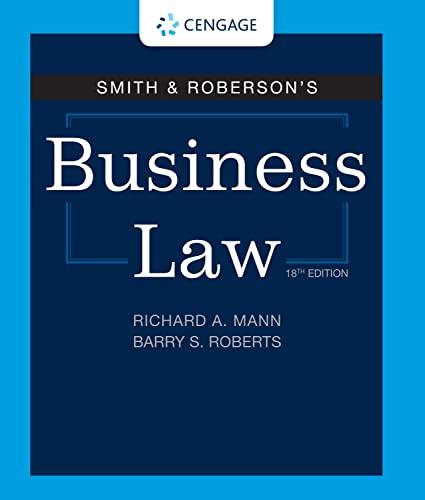Answered step by step
Verified Expert Solution
Question
1 Approved Answer
While the information provided is sufficient for you to respond, please feel free to look into your chosen case more, and feel free to add
While the information provided is sufficient for you to respond, please feel free to look into your chosen case more, and feel free to add what you find and how it supports your decision if you do explore further.
You may respond using the text box - just be sure to let me know which scenario you chose - Please read the following cases and answer the questions that follow.-----
- In 1835, Richard Lawrence attempted to assassinate President Andrew Jackson. This was the first assassination attempt on an American president. Lawrence believed that Jackson had killed his father and was also responsible for keeping him from inheriting a good deal of money from his father. The assassination was thwarted because neither of Lawrence's guns fired properly. During his trial, he interrupted repeatedly claiming to be the king of England and of Rome. The jury found Lawrence insane, and he was sent to an asylum for the remainder of his life. At the time of Lawrence's trial, which standard of proof of insanity was in place? Do you think Lawrence met that standard? Why? Who held the burden of proof during this time?
-----
- In the late 1970s, David Berkowitz killed six people in Westchester County, New York. Berkowitz generally went to teenage parking spots and killed lovers as they sat in their cars. When he was arrested, he confessed but claimed that he was acting on the orders of his neighbor's dog. Even though a psychiatrist who examined Berkowitz found him delusional and paranoid, and his attorneys recommended an insanity defense, he pled guilty. Berkowitz later claimed to have made up the dog stories. At the time of Berkowitz's trial, which standard of insanity was in place? Do you think Berkowitz met that standard? Why? Who held the burden of proof during this time?
-----
- Jeffrey Dahmer lured young men to his apartment, where he killed and then disfigured them. On occasion, he then had sex with the dead bodies and stored some of the body parts in a refrigerator to be consumed at a later time. When apprehended, Dahmer admitted that he had committed the crimes but attempted to use the insanity defense. The defense claimed that he suffered from necrophilia and had a borderline personality disorder. The prosecution responded by pointing out that Dahmer exhibited a high degree of control, his actions were premeditated, he took care to dispose of the bodies, and lied to fool his parole officer about his actions. The judge, persuaded by the prosecution's arguments, did not permit the use of the insanity defense. Dahmer was convicted in 1992 and sentenced to numerous life sentences. Another inmate killed Dahmer shortly after his incarceration. At the time of Dahmer's trial, what, if any, standard of insanity was in place? Do you think that Dahmer met that standard? Why? Who held the burden of proof during this time?
Step by Step Solution
There are 3 Steps involved in it
Step: 1

Get Instant Access to Expert-Tailored Solutions
See step-by-step solutions with expert insights and AI powered tools for academic success
Step: 2

Step: 3

Ace Your Homework with AI
Get the answers you need in no time with our AI-driven, step-by-step assistance
Get Started


